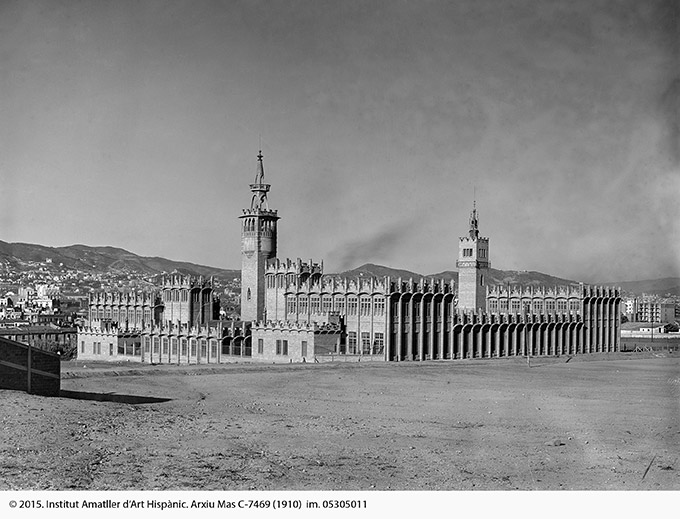Find out all about Casa Amatller
Works by Puig i Cadafalch
Josep Puig i Cadafalch finished his architecture studies in Barcelona in 1891, being congratulated by the director of the School, Elies Rogent, and by the professor and modernist architect Lluís Domènech i Montaner.
Between 1892 and 1896 Puig i Cadafalch obtained the post of municipal architect in Mataró, his hometown. In 1891 he had already carried out his first intervention in Casa Sisternes in Mataró, whose façade was decorated with bands of exposed brick combined with tiles and wrought iron.
Puig i Cadafalch made use of the construction methods that appeared with industrialisation, on which he applied the decoration of the modernist period. The most outstanding buildings in Puig i Cadafalch fall within the historical branch of Catalan modernist architecture initiated by Doimènech i Montaner. His architectural production reveals his knowledge of Catalan historical architecture, fundamentally from the Romanesque, Gothic and Renaissance periods, represented by asymmetrical compositions on the façades, a profusion of sculptural details and the use of medieval windows and grandstands. His buildings are linked to the land, with the reference of the Catalan Pairal house; but there is also a feeling of aristocratic and feudal prestige developed in his medievalist decoration.
Works
Casa Martí (1896) in Barcelona is considered to be his first work designed from scratch, and the personality of Puig i Cadafalch’s work can already be seen in it. Above its simple brick wall are stone doors, windows and grandstands with complex frames. This building houses the well-known restaurant Els Quatre Gats, one of the main meeting points of Barcelona’s artistic bohemian and Modernist groups.

In Mataró he built the Casa Coll i Regàs in 1898, a clear precedent for Casa Amatller: the main entrance is located on one side, while the monumental grandstand is crowned with a staggered finish.
Between 1898 and 1900 Puig i Cadafalch dedicated himself to Casa Amatller.
The location of the building in Passeig de Gràcia, the innovative forms and the beauty of the work multiplied the commissions for the architect from Mataró in the Eixample of Barcelona: the Renaissance-style Palau Macaya (1901); the now defunct Casa Trinxet (1904), influenced by the Viennese Secession; the Casa Terrades (1905), known as Casa de les Punxes for its fortress-like appearance with its pointed towers; the Palau Baró de Quadres (1904-1906), in which the neo-gothic style reinforced the nobility of the owner, who had received the title of baron a few years earlier. But he did not only build residences: in 1911 he was commissioned by Fábrica Casaramona, the current headquarters of the Caixaforum, where, despite its functionality, the aesthetic aspects of the construction are also valued.

Urbanism and monumentalism
In addition to carrying out architectural projects, Josep Puig i Cadafalch was in charge of carrying out urban projects. Between 1909 and 1911 he was in charge of opening Via Laietana, having to respect the old buildings of the historic centre as much as possible. And between 1913 and 1923 he was the principal architect of the 1929 Universal Exhibition site. In this place he had built the Quatre Columnes, in a classicist and monumental style, a symbol of Catalanism that was overthrown in the dictatorship of Primo de Rivera and rebuilt in the 21st century.
Restorer
Josep Puig i Cadafalch had studied history of art and architecture in Catalonia in depth, and was one of the region’s leading Romanesque specialists. This knowledge made him the ideal person to restore some of Catalonia’s historic buildings according to the criteria of the moment, today outdated: the monument was analysed with scientific rigour and the intention was to return it to the condition closest to the original. He did so in the cathedral of La Seu d’Urgell, Sant Joan de les Abadesses, the monastery of Sant Benet de Bages or the monastery of Montserrat.
Last few years
Puig i Cadafalch’s political activity at the head of Catalan nationalism led him into exile after the Civil War. In 1942 he returned to Catalonia, but was prevented from resuming his profession as an architect.
Puig i Cadafalch died in Barcelona in 1956.




